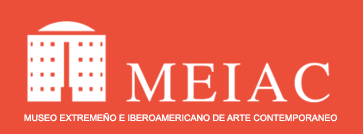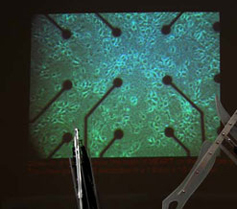 |


|
ARCO' 06 Nature ? |
|
At ARCO 06, the MEIAC presented three research proposals exploring different aspects related to creativity and art in times of biocomputing and the new biological technologies. Gnom, an investigation project done in digital interfaces for the visualisation, exploration and experimentation with genetic networks, developed by Santiago Ortiz, and Luis Rico with the collaboration of Federico Morán, Mónica Solé, and Alfonso Valencia, allows for the visualisation of a network of genes interactions in the bacteria Escherichia Coli, the first organism in the history of science whose genome has been completed. The Escherichia genome is composed of some 4,300 genes, with more or less 8,700 identified functions. The interaction network developed by the Gnom Project involves near 720 genes, 1,350 interrelations and describes their inhibitions and genetic activations. The graphic representation of the network has a circular shape, in which each gene is represented with coloured segments associated to its structural description. The colours of the interaction curve express the kind of relation between the different genes, and the lines outside the circle establish a bond of self-regulation. The project was developed with the support of MediaLabMadrid and the National Centre of Biotechnology. MEART, the work developed by the Australian SymbioticA research group, uses different media for the creation of a piece of work adopting a technologically created “identity”, whose installation is distributed between two (or more) places around the world. Its “brain” of dissociated neuron electrodes is cultured in a neuroengineering laboratory in the Institute of Technology in Georgia (Atlanta, USA). Its “body” is a pneumatically actuated robotic arm that is able to produce bi-dimensional drawings in the place it is being exhibited. The Internet is used to mediate between the components and communicate its “brain” with its “body”, in real time, during the show. The project suggests future stages where “entities of thought” that could be intelligent beings can be created, cultured or fabricated intuitively and creatively. Those beings could be created for the anthropocentric usage. But due to their unexpected nature, they will not necessarily be reassigned to the function they had been designed for. Nature?, the project by the Portuguese Marta de Menezes, was set in a laboratory in the centre of the stand, where the artist was working in the modification of the patterns of butterfly larvae that freely flew within that space. By means of natural grafts in the larvae, her work allowed her to create adult living butterflies with modified designs in their wings. It questions the existing similarities and differences between the manipulated and the not manipulated, between what is natural and what is newly natural. |
|